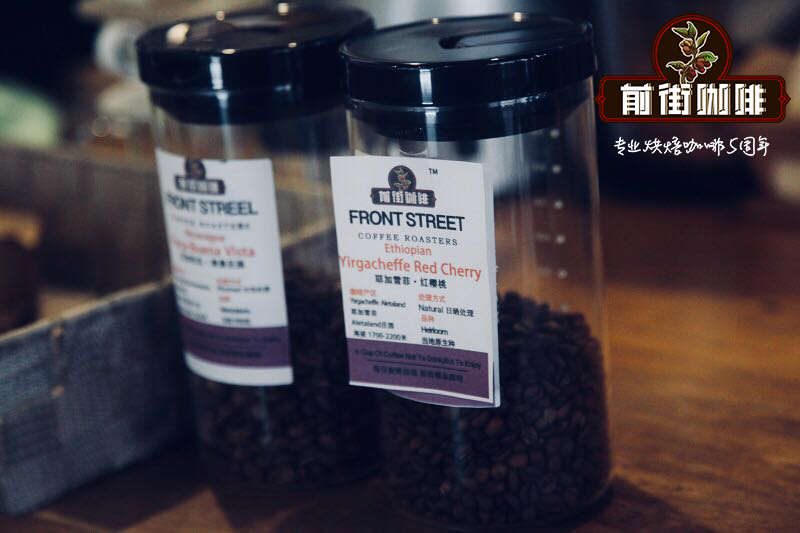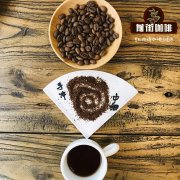What are the coffee producing areas? Coffee growing area?
It can be said that the variety Kaddura appears more frequently in American beans. This is a variety of bourbon, found in Brazil in 1937, with better production capacity and disease resistance than bourbon, plus shorter trees for coffee farmers to harvest.
But soybean prices soared in the 1970s, and farmers switched to Kaddura to increase production, which was popularized by the Brazilian and Colombian authorities and yielded fruitful results. The acceptance of Kaddura by farmers means a great change in planting technology. Brazil and Colombia switched to high-yield, high-density sun-exposed planting. in 1990, 14 million bags of coffee beans could be harvested on 1 million hectares, increasing production capacity by 60%. No wonder Kaddura, with high production capacity and high quality, has become a variety relied on by various producing countries.
Kaddura is suitable for planting in the high altitude area from 700m to 1700 m. It has strong adaptability to altitude, but the higher the altitude, the better the flavor, and the production capacity is relatively reduced. In academic circles, some people call Kaddura the bourbon of dense and exposed version, which can be said to hit the nail on the head.
| | handling method |
Solarization method
Tanning is an ancient and convenient way to treat raw beans.
1. Screen the floating beans.
Pour the harvested coffee fruit into a large trough, and the ripe and full fruit will sink to the bottom of the water; the underdeveloped or overripe fruit will surface, and these floating beans need to be removed.
2. Sun drying
Then put the whole coffee fruit with meat belt on the bean drying farm to sun, naturally dry to about 12% of the water content, the time required is about two to four weeks, depending on the climate of the origin.
3. Shelling
The dried fruit will be naturally dried and the hard peel, pulp and sheepskin will be removed by a shelling machine, and the raw beans will appear.
| | comparison of production areas |
Although both coffees are from Costa Rica, the difference is that Angel Manor is from the western valley, while the Pilon processing plant is from Tarazhu.
Western valley
The western valley is one of the seven major producing areas in Costa Rica. The harvest period of the western valley is from November to mid-March of the following year.
It is rich in volcanic soil, sufficient sunshine, with an annual average relative humidity of 81%, abundant rainfall and an average annual temperature of 21.50 ℃, which makes the crops grow luxuriantly in this area and is also conducive to the cultivation of high-quality coffee at high altitude.
In addition, the western valley region has a distinct dry and wet season, and when the coffee harvest season begins, it will enter the dry season, which means that the area has sufficient sunshine for washing and sunbathing. This advantage is seldom found in other producing areas in the country (almost all other famous producing areas in Costa Rica are machine-dried). The average altitude is 1000 to 1600 meters above sea level. But because the western valley is blown by more Pacific air, the temperature is often cooler than in other mountains at higher elevations. Therefore, the quality of coffee cherries and seeds is very excellent.
Tara bead
Tarazhu is one of the most important coffee growers in Costa Rica and one of the major coffee producers in the world. Costa Rica, with fertile volcanic soil and good drainage, is the first country in Central America to grow coffee and bananas because of its commercial value.
1200-1700 meters above sea level, from December to March in the producing area, with high acidity, hard and full bean body and rich aroma, this area is a world-famous producing area, and its main feature is that the high seafood area creates an incomparable perfect taste.
| | Baking & flavor comparison |
[Angel Manor]
This coffee belongs to the SHB grade extremely hard beans, the bean density is high, the moisture content is medium, the yellowing point is about 5 minutes 10 seconds, then reduces the firepower to open the throttle to enter the Mena reaction, when an explosion opens the throttle, gradually lowers the fire, the temperature is about 186.1 ℃, 2 minutes 05 seconds after an explosion, 198 ℃ now beans.
[Pilong processing Plant]
This Pilong processing plant is also SHB extremely hard beans, hard beans, medium moisture content, yellowing point in 5 minutes 15 seconds, then lower firepower to open the throttle into the Mena reaction, 8 minutes 30 seconds into an explosion, the temperature is about 183.1 ℃, at this time open the throttle, reduce the firepower to 80 ℃, develop 2 minutes after an explosion, 194 ℃ now beans.
If we take a closer look at the baking curve of the two beans, we will find that the development time and the temperature difference of the two beans are about the same, only the temperature of the next bean is different.
Angel Manor chose the lower bean temperature of 198 ℃, which makes its flavor more rich and balanced. On the other hand, [Pilong processing Plant] put the beans at 194 ℃, which is to show the fermented flavor of this bean and make its flavor more intense and pure.
| | flavor |
[Angel Manor]
It has a slight aroma of sun-fermented fruit and aromas of honey and almonds, rich floral aromas, acidity of plum, plum and grapefruit, some nuts and chocolate, raspberry finish and oolong tea aromas. with a slight aroma of red wine. The cleanliness is extremely high, and the sweet and sour feeling is obvious.
[Pilong processing Plant]
The cup has a strong aroma of fermented wine, sipping with the flavor of plums, apples, berries and red berries, as well as almonds and nuts, caramel and preserved fruit.
| | recommended cooking parameters |
[Angel Manor]
Filter cup: Hario V60
Water temperature: 90-91 degrees
Degree of grinding: BG 5R (64% of the pass rate of Chinese standard No. 20 screen)
Powder / water ratio: 1:15
Technique: 15g powder, the first injection of 30g water, 25 s of steaming, the second injection to 120g of water cut off, waiting for the powder bed water to half of the water, slow water injection until 225g of water, extraction time about 2:05.
[Pilong processing Plant]
Filter cup: Hario V60
Water temperature: 90-92 degrees
Degree of grinding: BG 5R (64% of the pass rate of Chinese standard No. 20 screen)
Powder / water ratio: 1:15
Technique: 15 grams of powder, steaming with 31 grams of water for 30 seconds, slowly injecting water to 124grams for stages, the water level is about to be exposed when the powder bed is about to be exposed, and the water injection is about to end. The extraction time is about 1:45.
| | Summary |

Important Notice :
前街咖啡 FrontStreet Coffee has moved to new addredd:
FrontStreet Coffee Address: 315,Donghua East Road,GuangZhou
Tel:020 38364473
- Prev

Coffee filter cup?
Choose the hand pot, the flavor produced by the first hand pot is pure and refreshing, and the second coffee should not be soaked for a long time. Soaking for a long time will release the tannin and sour taste excessively, causing the taste to be bitter and sour, and the aroma will change. The legal pressure is difficult to master. The hand pot had better be equipped with a special thin neck long mouth pot, as well as filter paper. Generally, the brewing time of the hand pot is about 60-80 seconds.
- Next

Costa Rican coffee, Costa Rican coffee cultivation
The coffee beans produced in the high latitudes of Costa Rica are famous in the world, full-bodied, mild in taste, but extremely sour. The coffee beans here have been carefully processed, which is why they have high-quality coffee. Located in the south of SanJos, the capital of Tarasu, Costa Rica is one of the most valued coffee growers in the country. Tarrazu World
Related
- What documents do you need to go through to open a coffee shop? coffee shop coffee shop certificate processing process
- How to purchase Coffee beans in small Cafe how to choose a suitable supplier for domestic Coffee supply Company
- How to drink Starbucks Fragrance White Coffee? how to make Australian White Coffee? what Italian coffee beans are recommended?
- The Story of Flora Coffee: the name of Flora Coffee Bean and the implication of the Flowers on Florna Coffee
- How much does a cup of coffee cost? How much is the profit of a cup of coffee? What is the profit of the coffee shop in a year?
- Yunnan small Coffee, known as "fragrant Coffee", introduces the characteristics of Alpine Arabica Coffee producing areas in Yunnan, China
- 2023 latest Starbucks full menu price list how much is a cup of Starbucks coffee what is better to drink the most popular hot and cold drinks recommended
- Starbucks different kinds of Coffee Price list Starbucks menu 2023 Top Ten Best drinks in Starbucks
- Starbucks Spring praise Comprehensive matching Coffee Bean theme Story Packaging implication and taste description
- The cost of a cup of coffee latte American coffee cost price and selling price

